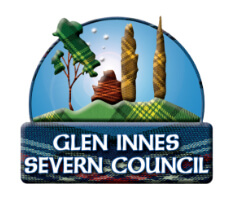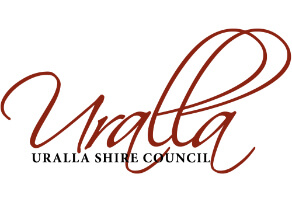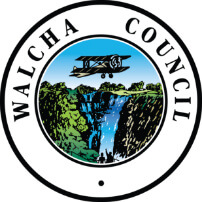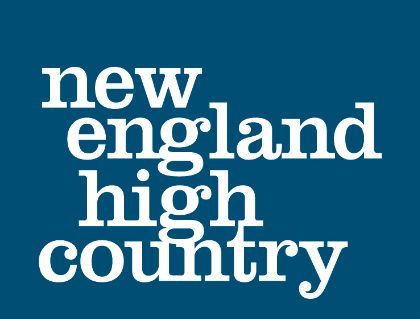We started our trip early in the morning, too early really, but such was our keenness to make the first stop, Cullendore High Country, a privately run farmstay on the edges of the great dividing range (GDR) that, should you believe the images on the internet is my kind of paradise.
Only a few leisurely hours drive down from Brisbane, caravan in tow, its a stop worth planning before you hit the more commonly known reaches of northern New England High Country (NEHC).
The best route, and note I did not say fastest, is to come down via the Cunningham Highway that reaches south from Ipswich before turning west for Warwick. Taking this route can still be busy, traffic-wise, but you’ll get to see some fantastic productive land flowing between the outcrops of the ranges ahead. Navigate south from Warwick, through the backcountry towns like Killarney and you’ll be taking the less travelled but more scenic route to Cullendore, so I’d suggest you do.
Cullendore is a passion for proprietors, Stuart and Wendy. Having sought to develop a station into a retreat for ecology lovers, slow-tourers and families looking for a getaway, it took the pair seven years to find the right place and another four to get it ready for visitors. Now operational, the 4000 acres is paradise. Catering for a maximum of 500 persons per night, you’ll always find a private and frankly stunning view. We spent most of our time at Mountain Camp where the view, birdlife and friendly neighbours made us feel at ease. If you’re more interested in water views or a spot of fishing, head to Kingfisher, it was another stunner.
Heading out
From Cullendore, we set our sights on Tenterfield but not before adding a stop in Boonoo Boonoo National Park (NP). In what will become a bit of a recurring theme in this feature, we found ourselves at a series of waterfalls dug deep into the rock that forms the Great Dividing Range. With the recent rain, we were treated to a spectacular view accompanied by the deep rumble of a tall waterfall; exceptionally soothing. After an hour or so exploring the pools at the top of the falls, we checked out the nearby Cypress Pines Campground and can confirm what the National Parks website claims, it will accommodate a large motorhome with ease.
As evening approached, a date at the Commercial Boutique Hotel for a locally sourced steak and brew or two had us scamper to town. On arrival, we noticed the Hotel was popular with locals, always a good sign yet luckily we snagged the best seat in the house, the back verandah where we took in the last of the setting sun.
Around town
Like most of the NEHC, Tenterfield was built on the revenue of early explorers and much of its history still stands. Many of the historic buildings have been repurposed, like the Commercial Boutique and Sir Henry Parkes School of Arts Museum but one has kept its roots firmly in its past. Run by a gang of volunteers and made famous by Peter Allen’s song bearing its name the Tenterfield Saddler is remarkable and a must stop. Full of nostalgia as well as artifacts from the town’s past, like us, you’ll get stuck there for hours looking at and listening to its history from the kind folks that open the doors. If you decide to stay in town, there are plenty of options. For RV’s we’d choose the Tenterfield Showground Caravan Park for its proximity to the relaxing gardens and parks that flank the Tenterfield Creek.

Back in the bush
For us, it was time to head back to the bush to Boonoo Boonoo’s sister park, Basket Swamp NP. This one is best done without a trailer hitched and avoid tall and wide motorhomes as the access roads are fairly challenging, tight and rough in spots. What we found at the end was another exemplary waterfall as well as a list of hikes that will take you into the heart of the park and its indigenous history. There is no camping at Basket Swamp but should you be travelling in a 4WD, there are tracks that you can follow to Cypress Pines.
Sticking with the exploratory theme, you should pencil in Mulligans Campground deep within Gibraltar National Park, about an hour and a half from Tenterfield or a bit less from Glen Innes.
We arrived to a gaggle of hikers about to set off and after a quick chat, found out this area of the Gibraltar Range National Park is one of the most popular for both day-hikes and multi-day walks that tie many of the back-country huts, highlights and tracks together. We weren’t ready for such endeavours but I’ve put it on my list to see The Needles in my next visit, so strong was the suggestion from the hikers.

Glorious Glen Innes
Like Tenterfield, Glen Innes was born of an era of exploration by early pioneers. The main road has stunning architecture, great cafes and excellent boutique stores to sample (and buy) local goods and interesting nic-nacks. Parking is RV friendly, especially around the Visitors Information Centre.
Although never enough, we had a bit of time in Glen Innes and used it well. After being over-fed with another quality locally sourced steak, this time from the New England Motor Lodge we headed up to the Centennial Parklands to check out the Australian Standing Stones. The hill feels like an extinct volcano and has steep sections but do not be deterred, there is ample parking and plenty of room to turn with a caravan in tow near the summit.
We deliberately waited till after our meal to head up the hill, this was to take in the sunset knowing the park is always open. In typical summer fashion, the sunset was a while off so we looked around the 38 three and a half metre tall monoliths that make up the Standing Stones. They make an interesting place, especially for kids who used their stony bulk to play hide and seek or to surprise their parents. The day ended how we wanted with an excellent sunset.
We woke early and made our way south to one of the most popular and populous towns of NEHC, Inverell. Our first stop was to try our hands at one of the pastimes that led to the success of the region, fossicking. We weren’t expecting to find a gem valuable enough to order a new van and tow rig but we wanted to see it firsthand so booked in time at Billabong Blue Sapphire Fossicking Park.

Blue beauties
Billabong Blue Sapphire Fossicking Park offers a few different ways to strike it rich. You can hire a sieve and make your way down to the creek that runs through the old riverbed and try your luck in the banks (rumour has it that a gem valued around $25,000 was found this way not a year ago) or you can have a guided lesson on the process. We took the latter and loved it. Not only did our sieves glitter with flakes of tiny blue sapphires, we found a small red that although again, not hugely valuable gave us a memory of the time to cherish.
The weather started to change from the calm, dry northerlies we started our journey with to a strong westerly and ultimately, a swing to the south which bought with it some rain and put a chill in the air. No trouble, Inverell has plenty of indoor attractions to fill in time.
Our first stop and a highlight from the whole trip was the National Transport Museum. I am a petrolhead, an enthusiast of anything mechanised really, so the Museum was heaven. Talking to the staff on hand, most of the vehicles are owned by east-coast and local enthusiasts that appreciate the quality of the massive buildings and their climate-controlled airflow. They pay for the privilege to have their cars there so it was no surprise to find some gems. We found almost all of the most interesting Holdens and Fords that defined Australia’s manufacturing boom as well as some coach-built Bently’s and Rolls Royce saloons that had me wondering what they could tow.
We couldn’t spend all day there, though I would have tried if my travel partners allowed, so we jumped back in the Isuzu and drove a few hundred metres down the road to the Pioneer Village. A blast from the past, it demonstrates how far our housing stock has come with some of the cabins (houses to the original occupants)- tiny by modern standards. Bending and squeezing through the doors, they are as close to original as possible and clearly well cared for. Within the expansive grounds are some buildings dedicated to service people and the wars they bravely fought. It is a humbling experience as many of the exhibits are detailed with personal information about the farms and families they left for the fight.
Onwards to Reflections Holiday Parks – Copeton Waters Holiday Park (commonly known as Copeton Waters), our accommodation for the night and a nature wonderland. We got there with little time before the sun was to set, so we did not venture far, setting up camp facing north and overlooking the distant water.
The dam at Lake Copeton manages the Gwydir River for environmental, hydroelectric power generation and irrigation. It is not often seen near-full and at the time of writing is around 20% of capacity. During our visit though I didn’t get an official reading, it cannot have been much different as we explored right down to the water’s edge where dirt tracks lead to pseudo-boat ramps. It was a fair hike and what appeared to be the ramps were well above the waterline. On the upside though, wallabies and kangaroo by the dozens and birdlife in abundance. We celebrated the location with a fire and a bbq during another fantastic sunset and though it was quiet during our time, I would suggest booking early during school breaks as the park is laid out and set up with kids in mind. I reckon they’d love it there.

Wooden wonders
Rob Day of New England Wood Turning invited us to come by for a lesson and tour of his workshop. It turns out the devastating fires that ravaged parts of NEHC in 2019 came very close to Rob’s home and workshop, shutting down the area and causing a massive drop in visitor numbers. You can imagine the heartache when 2020 threw its toys out of the cot soon after.
Rob is one of the greats of regional tourism, always up for a chat and dedicated to his craft and passion. We spent a good few hours walking through the sculpture garden as well as getting a first-hand lesson on wood turning and didgeridoo creation. It was a welcome end to a packed day. Next stop is Green Valley Farm for a BBQ and cosy nights’ rest.
Join us next issue when we continue to explore Inverell before heading onto Armidale, Uralla and Walcha.








